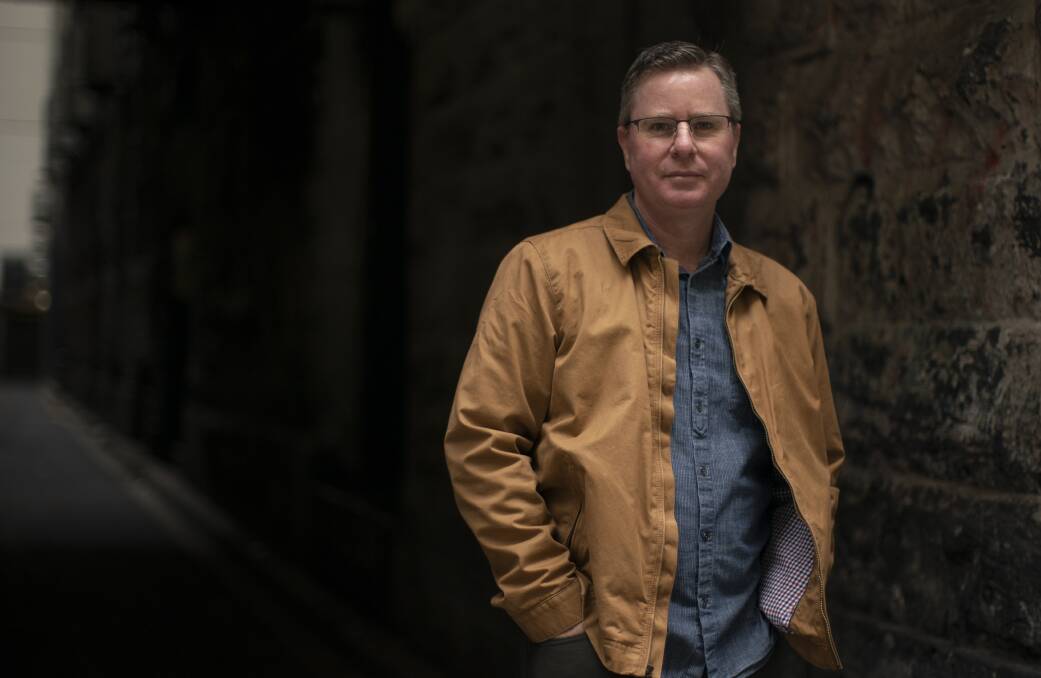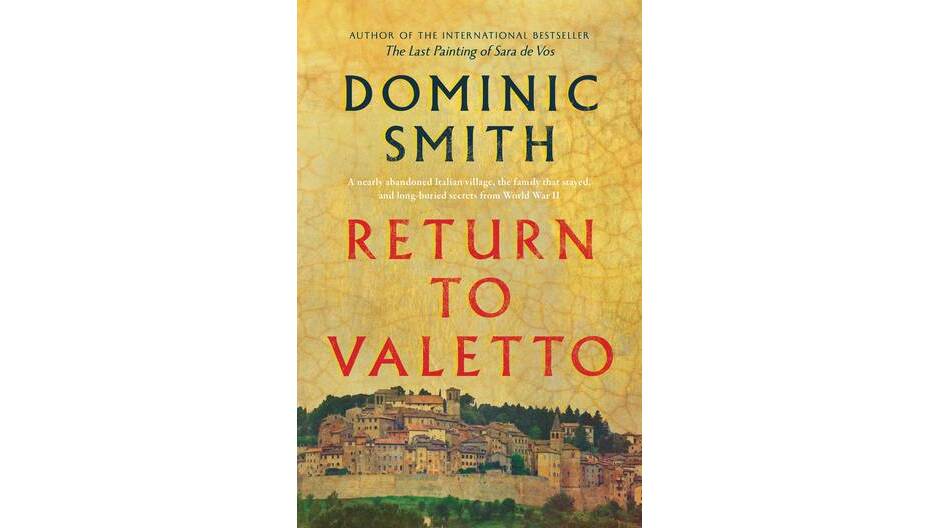
- Return to Valetto, by Dominic Smith. Allen & Unwin, $32.99
Australia's in the midst of a housing crisis, but in Italy, there are two million vacant homes scattered throughout the country.
Subscribe now for unlimited access.
$0/
(min cost $0)
or signup to continue reading
It's a fact author Dominic Smith enjoys relaying to people, along with the real kicker - that there are also around 2500 abandoned villages throughout the country.
"That's why we always see those online articles about some tiny village that will sell you a medieval house for 10 euros," he says.
"I mean, that's part of that whole problem. I've been stunned by that for a long time."
It was on various trips to Italy that the Australian author began to notice these ghostly villages, often a stone's throw away from another, thriving one. It was a country on a faultline, beset by earthquakes and landslides, but with centuries of history co-existing side by side, often on the same city block.
He eventually realised that these villages would somehow form the basis of his next novel, and set about making a dedicated study tour.
"One of my things is ... I just pull on the thread of something that I'm fascinated by, curious about, and I just, for better or worse, trust that curiosity to land me somewhere interesting," he says.
His bestselling 2016 novel, The Last Painting of Sara de Vos, was an astonishing feat of time travel across centuries, from a single painting by a Dutch woman in the 1630s, to an art dealer in 1950s Manhattan, to a present-day Australian art student hired to make a forgery of the 300-year-old work.

Smith's new novel, Return to Valetto, has a similar kaleidoscopic aesthetic, this time linked to crumbling edifices, and history - both ancient and recent - that is always just up ahead and around the corner.
He received a grant in 2018 to travel to a dozen dwindling towns and villages across Italy. The result is a family saga set in a fictional Umbrian village, home to just 10 people and a bunch of stray cats. The residents include a family of eccentric widows - a mother and her three daughters - living in a crumbling medieval family villa.
Their nephew, Hugh, is the story's narrator - an American historian who returns to the village to relive some of his childhood summers, and dig deeper into his own specialist topic - abandoned Italian towns.
But there is an interloper in the villa, a worldly Milanese chef who claims the family patriarch, Aldo, had promised her family the villa's cottage in return for sheltering him during the war when he was a resistance fighter.
Thus, the past - both ancient and not-so-ancient - collides with the present, and family secrets are uncovered.
The villa is a character in itself. Like so many that he saw around the country, it's the kind of place that no amount of money can ever restore to its former glory. Instead, it decays gradually over time, as generations come and go and family sagas play out.
Smith was also particularly struck, in Italy, by the proximity of many of the villages to lively centres; the concept of remoteness, of abandonment, has different connotations in a country that's just 4 per cent the size of Australia.
"That was one of the things that was a real discovery for me writing this book and researching it," he says.
"In Australia, in the US, you think of ghost towns, you think of the west, or you think of ghost towns out in the bush, that are sort of on the wrong side of history. And they've been abandoned because they were all railway or mining towns.
"What usually is the case in Italy is that these places are abandoned over time because often it's landslides and earthquakes, because Italy's super seismic. A lot of times, it's just people leaving to get better jobs. But some of these places are not super remote."
It was this concept of being "abandoned in plain sight" that he latched into during his research.
"Italians never really let any part of history go," he says.
"You can be on a street corner in Rome, and you can see three eras of history on the same block. You can see something from the Roman era, something from the Etruscan era, and sometimes something from the Fascist era. And they're all just sitting there side by side - I think that sort of juxtaposition of history was also really interesting."
It was when he visited the real town of Civita di Bagnoregio, about halfway through his travels, that he knew he'd found the setting for his novel.
"There's only a footbridge, that's the only way in and out of the town," he says.
"It was this incredible hill town that was settled by the Etruscans more than 1000 years ago. And like all the details in the book, like the big earthquake that happened, waves of people leaving, there are other earthquakes, landslides. And so you went from a town of 3000 to about, during World War Two, a couple of hundred people living there. And then now there's only 10 people who live there full-time.
"You walk across this footbridge, you walk through this Etruscan archway that opens out onto this piazza that's surrounded by these mediaeval stone houses. There's a Gothic church with a 12th-century bell tower, and this is home to 10 people and about 25 stray cats."
Like the fictional Valetto, the town sits on a pedestal of rock jutting out of a steep valley, not at all far from the next town. And while it was, in reality, home to a mediaeval saint whose house partly tumbled off the edge of a cliff in the great earthquake of 1695, the book features a dramatic, disembodied staircase spiralling up into the clouds - an apt metaphor for all kinds of things.
"One of my biggest challenges with this book was not injecting it with real people from my interviews, because everyone I interviewed was just larger than life and totally fascinating," he said.
"What I had do [was] the initial research and then just invent. So what Valetto uses from Civita is much of the history and the geology, but all the people, even the villa, and the Anglo-Italian family - those are all inventions. It's sort of like inventing over the top of some scaffolding."
Speaking from his home in Seattle, Smith is an Australian author who doesn't sound in the least bit Australian. But, he says, like characters in his own novels, he has a layered family history.
His father was American, his mother Australian, and he grew up in Sydney and the Blue Mountains. He still has his mother and three sisters here, although he has lived in the US now for more than 30 years.
"I think of myself as an Australian-American writer ...I feel very much like I live between the two different worlds," he says.
But his mother's people came to Australian in a roundabout way; a Scottish family who emigrated from Scotland to America in the 19th century, were shipwrecked off the coast of New Orleans, settled in Kentucky, returned to Scotland, and eventually emigrated to Queensland.
He wanted to evoke this kind of community flung out into the world, and gave his fictional matriarch, Ida, a similar trajectory. She has descended from a family who formed part of a phantom 19th century voyage, the failed De Rays Expedition that saw 340 Italian colonists stranded in New Guinea, and eventually offered refuge in Australia.
It was, he says, a way of "injecting a little bit of Australia" into his novel.


